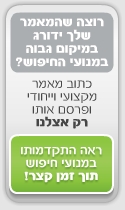Forensic Graphology – Comparing Forged Signatures and Handwriting
מאמר זה נכתב ע"י זמיר סיון גרפולוג משפטי מומחה
Thousands of signatures are forged daily in a conscious or proactive manner. Forged signatures are popular with checks, contracts, agreements, wills and testaments, credit vouchers, corporate agreements, paintings and more.
Bank tellers verify customer signatures with a short glance – if the general form seems similar and the signature is confirmed to be that of the account holder, the signature is approved, even if it was forged and the forger managed to discover the general form of the signature.
Some signatures are seemingly simple to forge, but the simplicity lies in the ability to recreate the general and visual shape of the signature. Forgers do not consider all of the unique graphic and motor aspects relating to the specific writers; elements that cannot be imitated or observed with an unprofessional eye. These elements include, inter alia, writing pressure, structure of the beginning and the ending of lines comprising the signature, line flow and quaking, specific and repetitive graphic elements, signature angle, differences of length and height, writing speed, ink flow, etc.
A graphologist specializing in comparing handwritings, follows the motor nature of writing and the shapes that are characteristic of a specific writer, comparing the elements to the signature or to the disputed handwriting.
By applying their knowledge in the field of graphology and using the appropriate equipment, forensic graphologists can discover forged signatures and handwriting and submit an expert opinion to courts of law.
We all introduce our unique “self” into our handwriting and signature through our graphic and motor expression. Forensic graphology and handwriting comparison has gained momentum in recent years and developed into a diagnostic tool admissible in courts and used as a supportive element for determining the existence of forgery. In cases where there are no additional clues, the graphologist’s opinion can even serve as the main expert opinion in the case.
There are also more sophisticated forgers who use graphic software programs to forge a signature to a document. One can simply scan a signature and use PhotoShop or any other graphic program to place it where the signature is required. In doing so, forgers seemingly demonstrate the perfect forgery of another person’s signature. However, in reality, the “perfect forgery” is not really perfect seeing that the chances for a completely identical signature are very slim. People signing a document maintain the line flow, they shape and dynamic that is characteristic of their handwriting and signature, yet they are unable to recreate two absolutely identical signatures.
Try it for yourselves, take a white sheet of paper and sign it 10 times. No doubt, you will find many very similar signatures, but you will not find even one that is absolutely identical.
When comparing signatures suspected of being forged, a large number of graphic elements and writing flow issues relating to the writer are considered and integrated within additional findings that may impact the signature diagnosis. Following is a review of several of the tests performed by graphologists when comparing forged signatures.
Forensic graphology: Assessing signature flow and movement
There are people who write quickly and others who write slowly, or slow compared to others. There are people whose ink release is dense and others who give space for their lines. Graphologists must compare the speed of writing when addressing the verified signatures of individuals. Where there is a difference between the writing speed of a verified signature and that of the disputed one, the suspicion of forgery ensues. But there is no single graphic parameter capable of providing a reasonable probability of forgery due to the fact that there are elements and situations that may influence the alertness or emotional state of the writer, and a single deviation does not provide concrete evidence for reaching a conclusion of forgery.
Forensic graphology: Assessing the characteristic flow and shape
Different individuals have different methods for holding their writing utensils. There are those who hold their pens with a relatively weak hold, at a certain angle or another. There are others who draw a visible or invisible line between their letters. Every such parameter can impact the “character” of the line created on paper. Signatures are usually comprised of lines going up and down and, in some cases, loops, curves and angles. Where significant differences are found in these shapes when comparing to handwriting samples, there is reason to suspect forgery. People whose handwriting has a tendency to curve, probably will not change the nature of their writing completely when singing a document, seeing that it requires a completely different motion of the hand.
Forensic graphology – Writing pressure
When people write on paper, they exert pressure on the writing utensil. The nib of this utensil leaves its mark on the paper and, when it is especially hard, even an untrained eye can see its mark on the other side. Expert graphologists increase the page width in order to observe the writing pressure accurately. Writing pressure can also vary in different parts of the signature or within a single word. There are those who sign and place strong pressure on the downward lines or upward lines, while other lines are different. Or the opposite is possible, there may be people who exert consistently strong or weak pressure throughout the signature. When a forensic graphologist compares signatures, the “paper thickness” is significantly increased in order to measure the nature and intensity of the pressure placed against the other side of the paper. Where deviations are found in terms of writing pressure, then we have found an additional element that can point to a forged signature or forged handwriting. It is also important to remember that the type of pen and type of paper are very important and may impact the writing pressure. When using relatively thin paper, pressure may be stronger seeing that the paper has less resistance than thick paper.
Forensic graphology: Line start and end – Formative shapes: skewer, stump and string
The signature line resembles a “string” that begins at a certain point and ends elsewhere. The point on which the signatories place their writing utensils and start signing is the signature starting point, and the point where it leaves the paper for the last time is the end point. Such line beginnings and ends bear characteristic shapes; some are similar to the end of a sewing thread, others resemble a “sharp, rigid and stabbing” skewer, while yet others are stumped. The evaluation is performed by enlarging the start and end lines by dozens or hundreds of percentage points, using a graphic computer program or a computer microscope in order to examine and process the image. Where differences are found in this graphic feature, then there is one more element that can point to forgery.
It is important to note that people whose handwriting is characterized as “stumped” at all ending lines will rarely create a “sharp skewer” shape and it is nearly impossible. People’s hand movements, holding forms and other parameters creating their handwriting are unique, thus if there is a significant difference in these shapes, there is definitely reasonable reason to believe that forgery is the case.
Forensic graphology – Characteristic shapes – Unique and recurrent graphic and motor elements
There are no two identical handwritings. Handwritings can be very similar, but the comparison between them is characterized by shapes and lines [sometimes minute] that every person performs in a different manner. There is sometimes a small dot in a certain letter, demonstrating a “procedure” that is repeated whenever that letter appears. There is often the appearance of a “Baghdadi slipper”, i.e. a twirl of the final letter. As a graphologist, I have seen thousands of handwritings and I have indeed seen many similar ones. However, I have never seen two identical handwritings. There is always a difference, just as there is always a difference between the people themselves. These graphic elements are often concealed from an untrained eye; sometimes the lines connecting the letters are invisible without appropriate equipment or knowledge. There are sometimes stronger ink spots in certain parts of a letter, etc. In the event that such a characteristic graphic element is found in someone’s verified signature or is absent from dispute signatures, one can also find support for the existence of a forged signature. There are many other graphic and motor elements examined by a graphologist in order to verify a signature, such as: differences in punctuation, examination of height and length areas, evaluation of the connection between letters, physical sensitivity in specific areas, and more.
Based on the above, the work of the forensic graphologist is of an investigative nature, demanding meticulous detective work – on the one hand, and extensive knowledge regarding graphology and writing flow – on the other. Many triangulations are required in order to reach a professional opinion with a high level of probability when suspecting forgery or when verifying signatures.
Zamir Sivan, Chief Graphologist and CEO, Zamir Graphology



